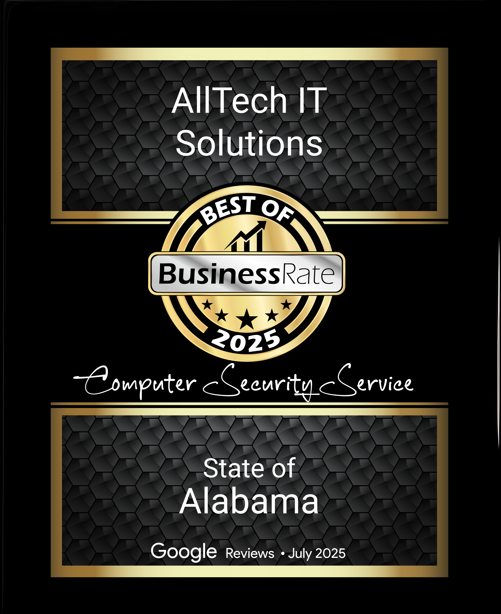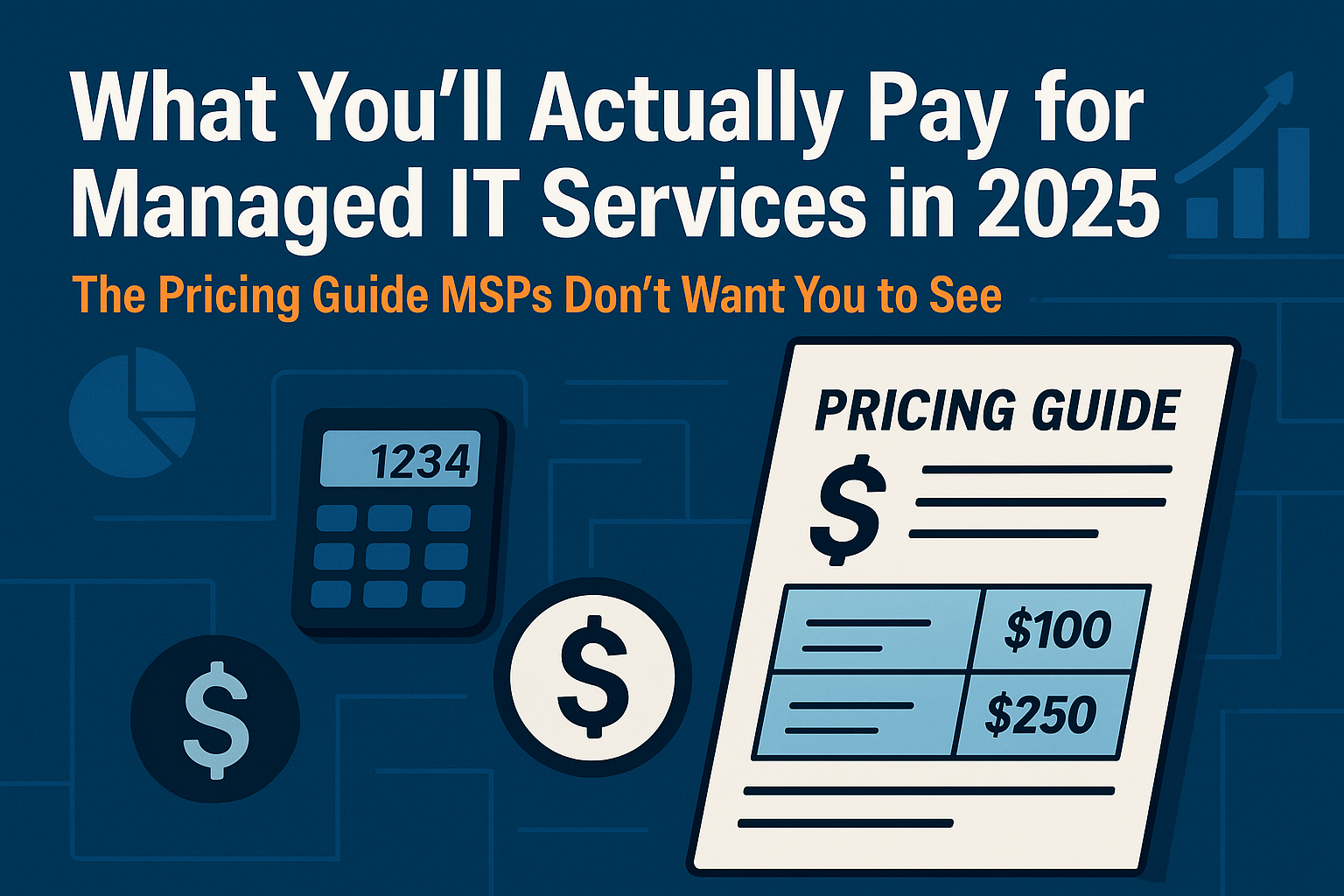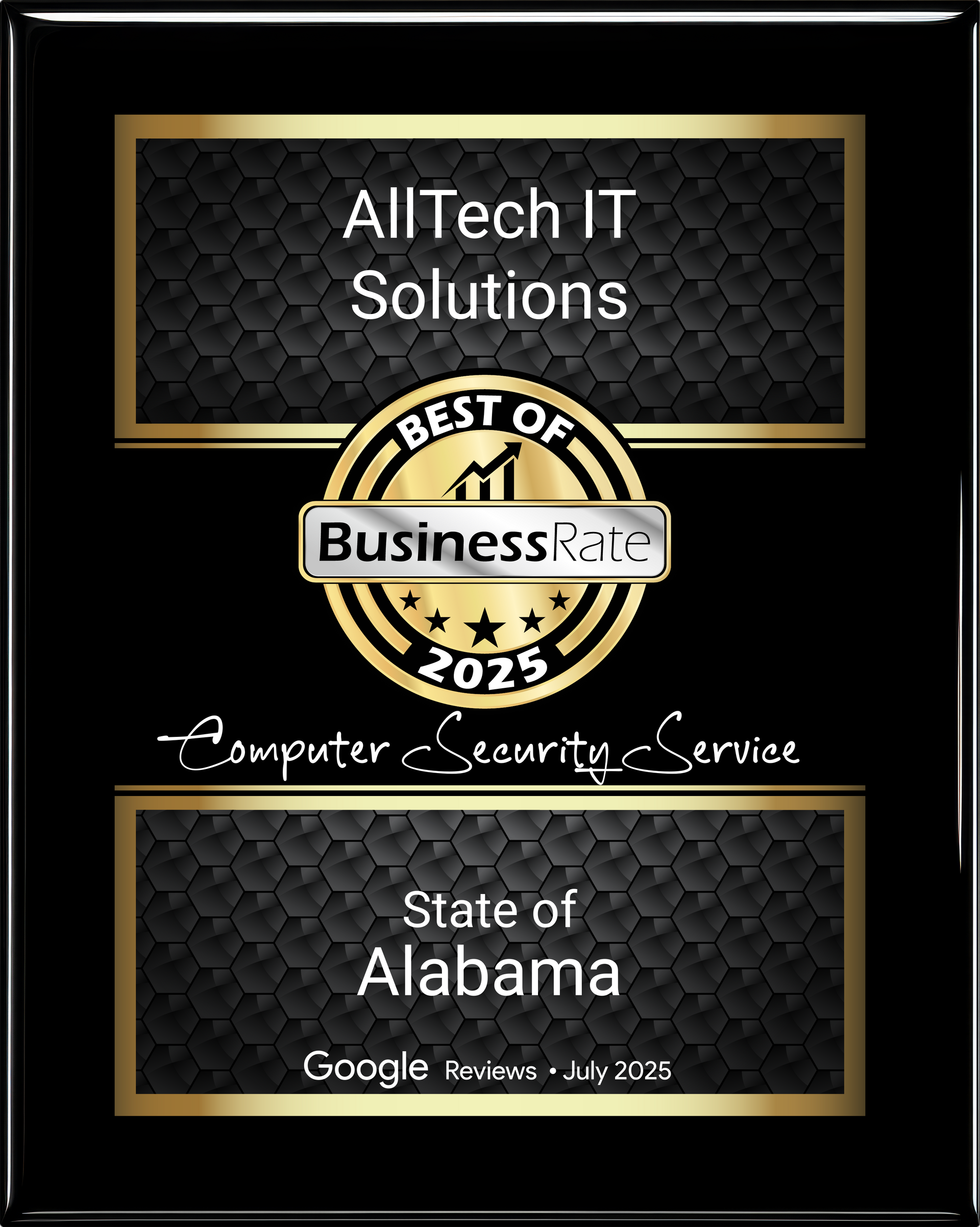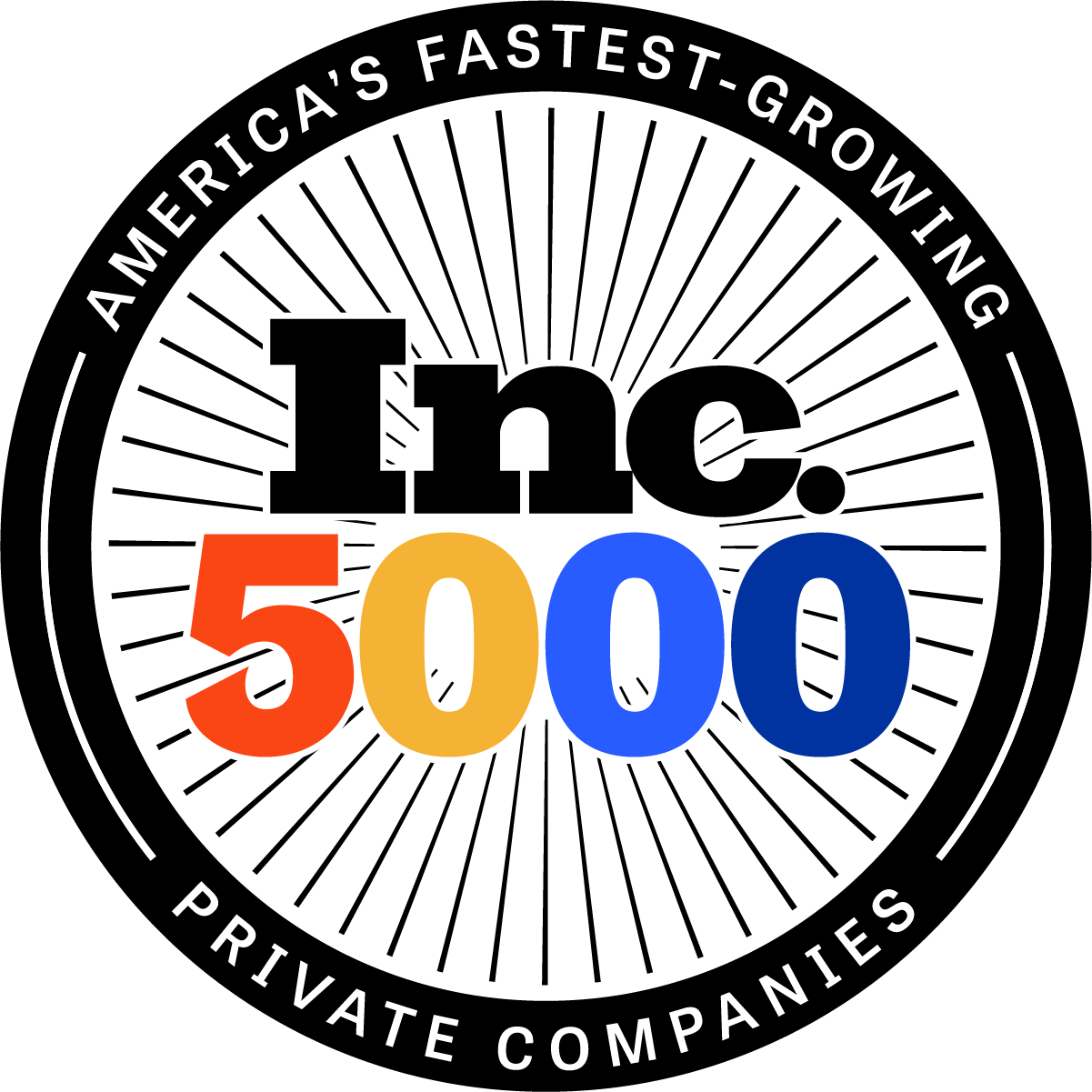Think Cloud‑Based AI Tools Keep You Safe? Here's the SaaS Safety Myth That's Costing SMBs
Think Cloud‑Based AI Tools Keep You Safe? Here's the SaaS Safety Myth That's Costing SMBs
Sixty-one percent of small and medium businesses experienced a cyberattack in 2023, with cloud-based services representing the fastest-growing attack vector (Verizon). Yet across boardrooms and IT departments, a dangerous myth persists: that moving to cloud-based AI tools automatically enhances security. This misconception has created a false sense of protection that's leaving SMBs more vulnerable than ever.
The reality is stark. While AI-powered SaaS platforms promise intelligence and efficiency, they've also introduced new attack surfaces, expanded data exposure, and created complex security blind spots that traditional defenses can't address. The shared responsibility model that governs cloud security places critical obligations on businesses—obligations many organizations don't understand or aren't equipped to handle.
This article exposes the hidden risks behind the SaaS safety myth and presents a strategic framework for protecting your business without sacrificing the productivity gains that drew you to cloud-based AI in the first place.
The "Why Now?" Crisis
The convergence of artificial intelligence and cloud computing has created an unprecedented transformation in how businesses operate. SMBs have embraced tools like Microsoft 365 Copilot, Google Workspace AI, and countless specialized SaaS platforms that promise to revolutionize everything from customer service to financial analysis.
The adoption rate tells the story. According to recent CISA guidance, over 90% of organizations now rely on cloud services for critical business functions, with AI-enhanced platforms representing the fastest-growing segment ("Cybersecurity Performance Goals"). This rapid migration has created what security professionals call the "cloud confidence gap"—the dangerous assumption that moving to the cloud automatically improves security posture.
The numbers paint a different picture. The Verizon 2024 Data Breach Investigations Report reveals that 83% of breaches now involve external cloud services, with SMBs facing attack success rates nearly three times higher than enterprises (Verizon). These aren't sophisticated nation-state attacks targeting Fortune 500 companies. They're opportunistic criminals exploiting the very misconceptions that drive cloud adoption decisions.
The problem isn't the technology itself. It's the fundamental misunderstanding of where responsibility begins and ends when your business data lives in someone else's infrastructure.
The Anatomy of the SaaS Safety Myth
The Misconception That's Costing Millions
Walk into any SMB and ask about their cybersecurity strategy. You'll often hear some version of: "We're using Microsoft 365, so we're protected by their security." This statement represents one of the most dangerous misconceptions in modern cybersecurity.
The shared responsibility model that governs cloud security creates a clear division of duties. Your cloud provider protects the infrastructure. You protect everything you put on it. That includes user access, data classification, configuration settings, and the countless third-party integrations that make modern SaaS platforms so powerful.
Yet our experience with hundreds of SMB clients reveals a consistent pattern: businesses assume their SaaS providers handle security completely. They don't realize that default configurations often prioritize usability over security. They don't understand that user permissions require active management. They don't know that data shared with AI tools may be stored, processed, or used for training in ways that violate their compliance requirements.
The AI Amplification Effect
Artificial intelligence has amplified both the benefits and risks of cloud computing. AI-powered tools can process vast amounts of data to deliver insights that were previously impossible. But that same capability creates new vulnerabilities.
Consider a typical scenario: your finance team uploads sensitive documents to an AI-powered analysis tool. The insights are valuable, but where does that data go? How long is it retained? Who else has access? What happens if the AI model is compromised? These questions rarely get asked during the purchase decision, but they're critical to understanding your actual risk exposure.
The challenge is compounded by the integration ecosystem. Modern businesses don't use one SaaS tool—they use dozens. Each integration creates new data flows, new access points, and new potential failure modes that traditional security tools weren't designed to monitor.
When Convenience Becomes Vulnerability
The features that make cloud-based AI tools attractive to businesses often create the biggest security gaps. Single sign-on simplifies access but can provide a single point of failure. Automatic data synchronization ensures teams stay updated but can spread compromised data across multiple platforms. Mobile access enables remote productivity but extends your attack surface beyond traditional network boundaries.
We've seen businesses discover that their "secure" SaaS deployment was sharing data with unauthorized third parties, storing sensitive information in non-compliant locations, or allowing access from unmanaged devices across the globe. The wake-up call usually comes during an audit, after a breach, or when a compliance violation surfaces.
The Real Risks Hidden in Plain Sight
Data Sovereignty and Control
When you store data in the cloud, you're not just changing where it lives—you're changing who controls it. The terms of service for most SaaS platforms grant broad rights to access, process, and analyze your data. AI platforms often include clauses that allow your data to be used for model training or service improvement.
For many SMBs, this creates immediate compliance issues. HIPAA-regulated healthcare practices, PCI-compliant retailers, and businesses handling European data under GDPR face strict requirements about data location, access, and usage. The cloud provider's security doesn't address these regulatory obligations—that responsibility remains entirely with your business.
The Integration Security Gap
Modern SaaS platforms excel at integration. They connect to your email, your CRM, your financial systems, and dozens of other tools. Each connection requires permissions and data sharing arrangements that expand your attack surface.
The security implications are rarely obvious. When you connect your AI-powered marketing platform to your customer database, you're not just sharing contact information. You're potentially exposing purchase history, payment methods, and behavioral data. If either platform is compromised, the attacker gains access to both data sets.
We regularly discover businesses using hundreds of integrated SaaS tools without any central visibility into data flows or access permissions. The complexity makes it nearly impossible to assess risk or respond effectively to incidents.
The Shadow IT Problem
Cloud-based AI tools are often adopted at the department level without IT oversight. Marketing teams subscribe to AI content generators. Sales teams use AI-powered prospecting tools. Operations teams deploy AI analytics platforms. Each decision seems logical in isolation, but collectively they create a shadow IT ecosystem that operates outside traditional security controls.
The consequences can be severe. Sensitive data gets processed by unvetted tools. Business logic gets embedded in platforms your IT team doesn't know exist. Compliance violations accumulate without detection. When incidents occur, your response is hampered by incomplete visibility into what systems are actually in use.
Architecting Real Protection: The AllTech Security Framework
The solution isn't to abandon cloud-based AI tools—they're too valuable for that. Instead, SMBs need a strategic approach that captures the benefits while managing the risks. Our AllTech Security Framework addresses the unique challenges of protecting modern SaaS environments through five integrated components.
Foundation: Unified Visibility and Control
Real security starts with knowing what you're protecting. Our AllTech Endpoint Pro Suite provides comprehensive visibility across all devices, applications, and data flows in your environment. This isn't just traditional endpoint protection—it's a complete asset intelligence platform that tracks every SaaS application, every integration, and every data movement in real time.
The visibility extends beyond your network perimeter. Whether your team is accessing AI tools from the office, home, or a coffee shop, we maintain continuous monitoring and control. Our platform integrates with cloud access security brokers (CASB) and zero-trust network access (ZTNA) solutions to ensure consistent policy enforcement regardless of location.
Layer Two: Advanced Threat Detection for Cloud Environments
Traditional antivirus and firewalls weren't designed for cloud-first environments. Our AllTech User Protection Suite deploys behavioral analytics and machine learning specifically tuned for SaaS threats. We monitor for unusual data access patterns, suspicious integrations, and anomalous user behavior that might indicate account compromise or insider threats.
The system learns normal patterns for each user and application, flagging deviations that might represent security incidents. When your marketing manager suddenly downloads the entire customer database or your finance team starts accessing AI tools from an unusual location, we detect and respond immediately.
Layer Three: Data Governance and Classification
Not all data requires the same level of protection, but you need to know which is which. Our AllTech Secure File Share platform provides intelligent data classification and governance that works across cloud environments. We automatically identify sensitive information—PII, financial data, intellectual property—and apply appropriate protection policies.
The system integrates with your existing SaaS tools to provide consistent data handling regardless of where information is processed. When sensitive data is uploaded to an AI platform, we ensure it's properly classified, encrypted, and tracked throughout its lifecycle.
Layer Four: Identity and Access Management
User access is the most critical control point in cloud environments. Our identity management solutions go beyond simple multi-factor authentication to provide adaptive access controls based on user behavior, device health, and risk context.
When a user attempts to access a high-risk AI tool or share sensitive data, the system evaluates multiple factors: Is this their normal device? Are they connecting from a trusted location? Does their recent behavior suggest account compromise? Based on this analysis, we can require additional authentication, restrict access, or trigger security team review.
Layer Five: Continuous Compliance and Risk Management
Compliance isn't a one-time assessment—it's an ongoing process that requires continuous monitoring and adjustment. Our AllTech Compliance Manager maintains real-time visibility into your compliance posture across all cloud services and AI tools.
The system maps your usage against relevant frameworks—HIPAA, PCI, GDPR, NIST—and provides ongoing gap analysis and remediation guidance. When new AI tools are deployed or existing services change their terms, we assess the compliance impact and provide clear guidance on necessary adjustments.
The Tangible Outcomes: What Real Protection Delivers
Reduced Risk Without Reduced Productivity
The biggest fear SMBs have about improving cloud security is that it will slow down their teams or limit access to valuable tools. Our approach proves this false. By implementing intelligent controls and automated monitoring, we actually enable safer adoption of new AI capabilities.
Teams can experiment with new tools within defined guardrails. Sensitive data is automatically protected regardless of where it's processed. Security incidents are contained quickly without broad access restrictions. The result is an environment where innovation happens safely.
Enhanced Operational Efficiency
Proper cloud security management eliminates many of the inefficiencies that plague SMB IT operations. No more manual tracking of SaaS subscriptions. No more emergency responses to compliance violations. No more productivity losses from security incidents.
Our clients typically see 40-60% reductions in security-related help desk tickets and a 70% improvement in incident response times. When your security tools work together as an integrated platform, your entire operation becomes more efficient.
Fortified Compliance Position
Compliance becomes manageable when it's built into your operational processes rather than treated as a periodic assessment. Our continuous monitoring and automated documentation ensure you're always audit-ready.
We've helped clients pass SOC 2 audits, HIPAA assessments, and cyber insurance reviews with minimal preparation time. The automated evidence collection and risk scoring provide auditors with the documentation they need while giving you confidence in your compliance position.
Business Resilience and Competitive Advantage
Perhaps most importantly, real cloud security enables business resilience. You can adopt new AI tools confidently, knowing they're properly integrated into your security framework. You can compete with larger organizations by leveraging the same advanced technologies while maintaining better security practices.
Your customers and partners gain confidence in your ability to protect their data. Your team can focus on strategic initiatives rather than reactive security management. Your business becomes more agile and more secure simultaneously.
Your Strategic Next Step
The SaaS safety myth isn't harmless—it's actively dangerous. Every day you operate under the assumption that cloud-based AI tools provide automatic security, you're exposing your business to risks that could prove catastrophic.
But the solution isn't to retreat from cloud computing or avoid AI tools. The solution is to implement proper security frameworks that match the realities of modern business technology. The organizations that get this right don't just avoid security incidents—they build competitive advantages that their peers can't match.
The transformation starts with honest assessment. Where is your data really stored? What permissions have you granted to SaaS platforms? How would you detect a compromise in your cloud environment? These questions reveal the gaps that need attention.
About AllTech IT Solutions
AllTech is a leading provider of integrated IT management and cybersecurity solutions. We partner with businesses to transform their technology from a liability into a strategic asset, delivering robust security, operational efficiency, and a clear path to compliance. Our expert team leverages best-in-class platforms to build proactive and resilient technology environments.
Take the Next Step
Ready to fortify your defenses and turn your security posture into a competitive advantage? See how AllTech's strategic approach can be tailored to your unique business challenges.
Contact our cybersecurity strategists today for a complimentary security consultation.
Email: Sales@AllTechSupport.com
Phone: 205-290-0215
Web: AllTechSupport.com
Works Cited
CISA. "Cybersecurity Performance Goals." Cybersecurity and Infrastructure Security Agency, 2024, www.cisa.gov/cybersecurity-performance-goals.
Verizon. "2024 Data Breach Investigations Report." Verizon Enterprise, 2024, www.verizon.com/business/resources/reports/dbir/.











